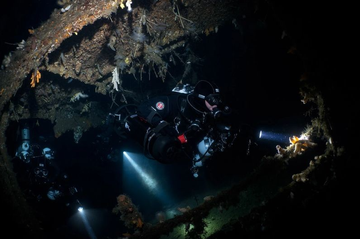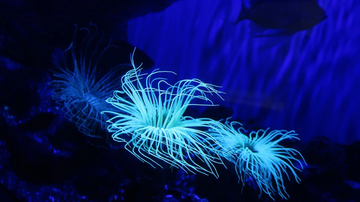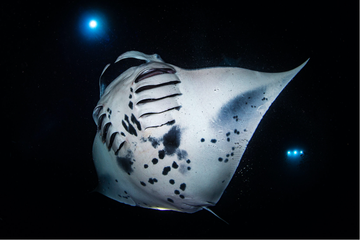Have you ever encountered this while diving—vibrant coral reefs and schools of fish that look breathtaking in person, but appear dull and washed out in your photos? Or perhaps you’ve noticed how red objects suddenly turn gray under your dive light? The issue might not be your camera or your eyes, but rather the Color Rendering Index (CRI) of your underwater lighting!

The Mystery of Disappearing Colors Underwater
On land, we’re accustomed to sunlight’s perfect color rendering (CRI=100), which reveals colors in their truest form. But underwater, things work differently:
Water absorbs colors: As depth increases, red light vanishes first (noticeably fading beyond 5m), followed by orange and yellow, leaving only shades of blue and green.
Depth (m) Depth (ft)

The limitations of standard dive lights: Many budget-friendly dive torches or strobes have a CRI of just 70-80, causing severe color distortion—especially in red and orange subjects (like coral or clownfish).
This is where high-CRI (≥90) underwater lighting becomes essential!
High-CRI Dive Lights: Bringing Back the Ocean’s True Colors
A Savior for Underwater Photographers
Low-CRI strobes turn red coral into muddy brown, while high-CRI lights (like professional underwater photo lamps) accurately reproduce colors, reducing the need for heavy post-processing.

Opt for lights with CRI≥95 and high R9 (red rendering) to ensure warm hues don’t "disappear."
Enhancing Night Dives
During night dives, where artificial light is everything, a low-CRI torch can make fluorescent corals or colorful fish look dull.
High-CRI lighting delivers richer, more vivid colors for a more immersive experience.

Scientific Research & Conservation
Marine biologists documenting species rely on true-to-life color accuracy—poor lighting can lead to misidentification or flawed data.
How to Choose the Right Underwater Lighting
CRI≥90: Ideal for recreational diving and casual photography, ensuring decent color accuracy.
CRI≥95 + high R9: Best for professional imaging or research, prioritizing full-spectrum white LEDs.
Match color temperature: Cool white light (5000K-6000K) complements underwater environments by minimizing blue-green dominance.
Myth: Brightness ≠ Color Accuracy
Many divers assume "brighter is better," but:
High lumens ≠ high CRI: A 10,000-lumen light with CRI 70 may render colors worse than a 5,000-lumen light with CRI 95.
Red lights aren’t a CRI substitute: While red modes reduce disturbance to marine life, they don’t fix color rendering issues.
The ocean is a world of wonder, and the right lighting helps us capture and appreciate its true beauty. Next time you shop for dive lights, look beyond waterproof ratings and brightness—check the CRI. It might be the key to your most stunning underwater shots!






f0bcan